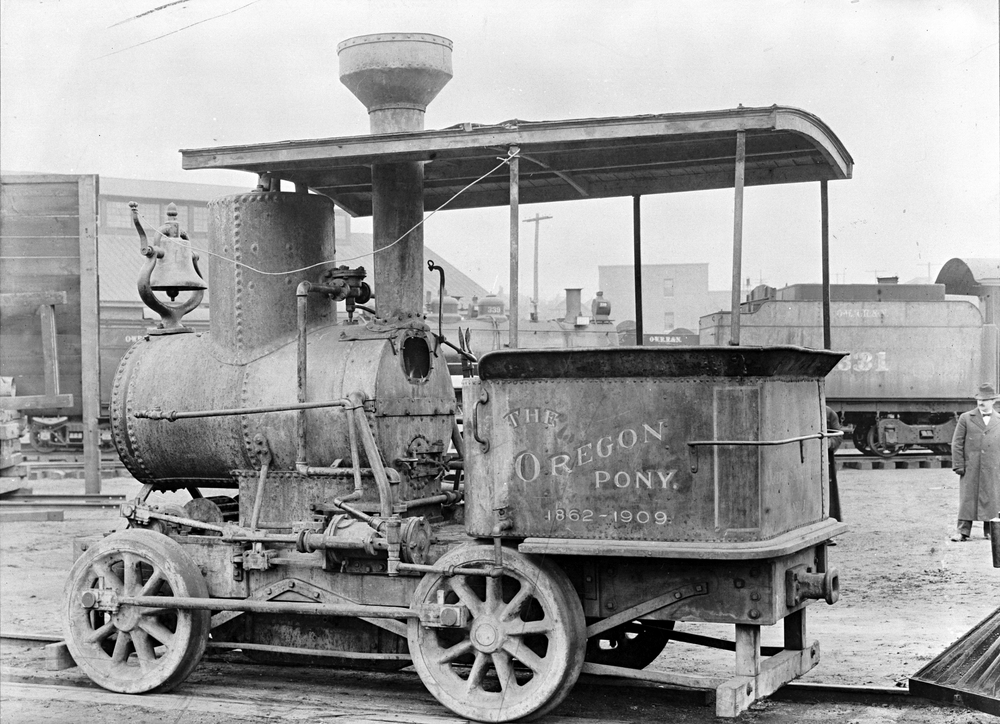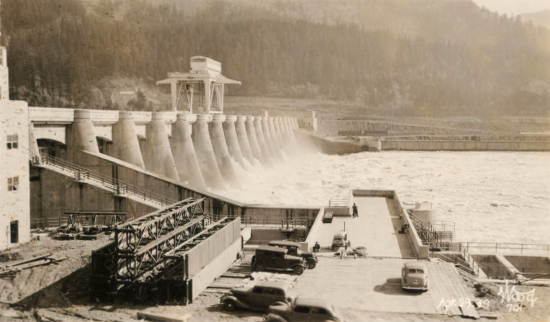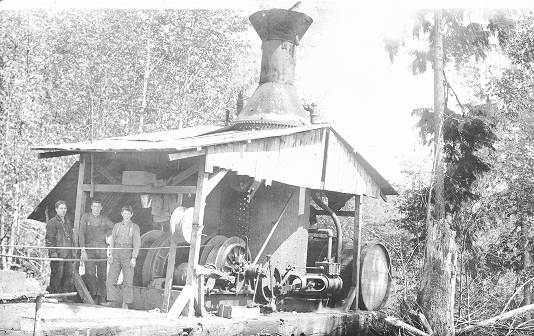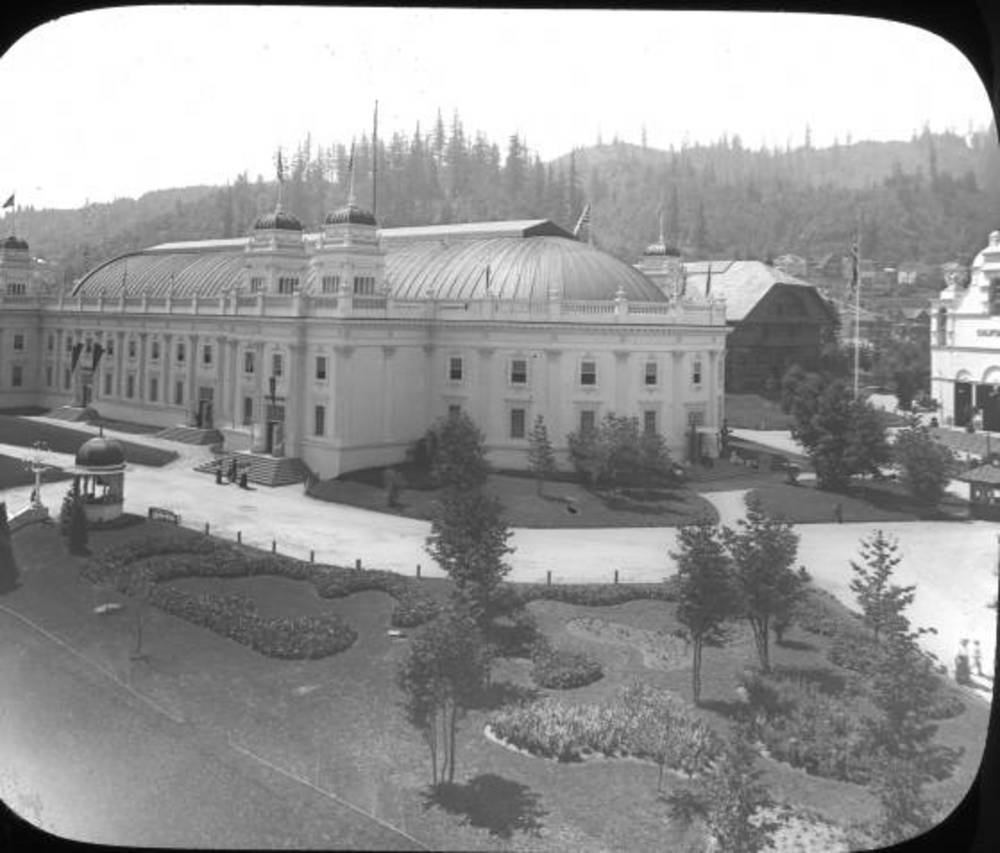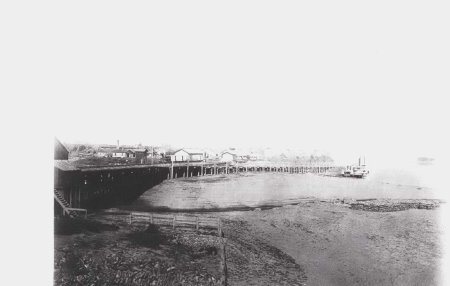The first steam locomotive in the Pacific Northwest—the "Oregon Pony"—was used in the early 1860s to portage steamboat passengers and goods past the Cascade Rapids, a rocky and turbulent stretch of the Columbia River now drowned by Bonneville Dam. Steamboats provided transportation on the Columbia between Portland and mining areas in Idaho and the Columbia Plateau. Portage was also necessary at other navigation obstructions, including Celilo Falls.
San Francisco's Vulcan Iron Works built the little wood-burning engine, only 14.5 feet long, which arrived in Oregon in 1862. It replaced the horses and mules that pulled small rail cars 4.5 miles over iron-reinforced wooden rails for the Oregon Portage Railway. The railway was bought by Oregon Steam Navigation Company (OSN). The company consolidated its Cascades rail portage monopoly on the Washington side of the Columbia River and moved the Oregon Pony to The Dalles, where it may have been used for portages around Celilo Falls.
In 1866, OSN sold the engine and it returned to San Francisco for work filling and grading the streets of that city. After the Oregon Pony was damaged in a 1904 fire, the owner partially restored it and donated it to the Oregon Historical Society. It was displayed at the 1905 Lewis and Clark Exposition and afterward at the Albina Rail Yards. In the 1930s, the Oregon Pony was moved to Union Station; it was returned to Cascade Locks in 1970. The Port of Cascade Locks funded a 1981 restoration and built a permanent, covered display.
-
![]()
The Oregon Pony, stored in Albina, 1916.
Oregon Historical Society Research Library, bb004049
Related Entries
-
![Bonneville Dam]()
Bonneville Dam
The U.S. Army Corps of Engineers built and operated Bonneville Lock and…
-
![Donkey engine]()
Donkey engine
A donkey engine was an integrated machine consisting of a powerplant an…
-
![Lewis and Clark Exposition]()
Lewis and Clark Exposition
Portland staged its first and only world's fair from June 1 through Oct…
-
![Oregon Steam Navigation Company]()
Oregon Steam Navigation Company
Among early business enterprises in Oregon, the Oregon Steam Navigation…
Related Historical Records
Map This on the Oregon History WayFinder
The Oregon History Wayfinder is an interactive map that identifies significant places, people, and events in Oregon history.
Further Reading
Gill, Frank B. “Oregon’s First Railway.” Oregon Historical Quarterly 25:3 (September 1924): 171-235.
Schwantes, Carlos. Long Day’s Journey: The Steamboat & Stagecoach Era in the Northern West. Seattle: University of Washington Press 1999, 129-32.
Staehli, Alfred. “The Oregon Pony.” Association for Preservation Technology International (APT) 19:3 (1987): 10-18.

